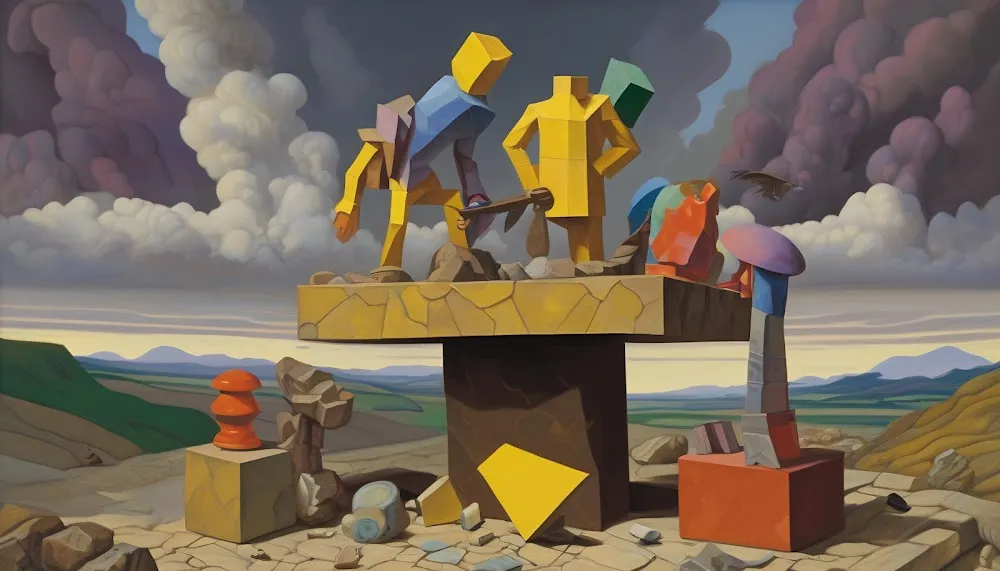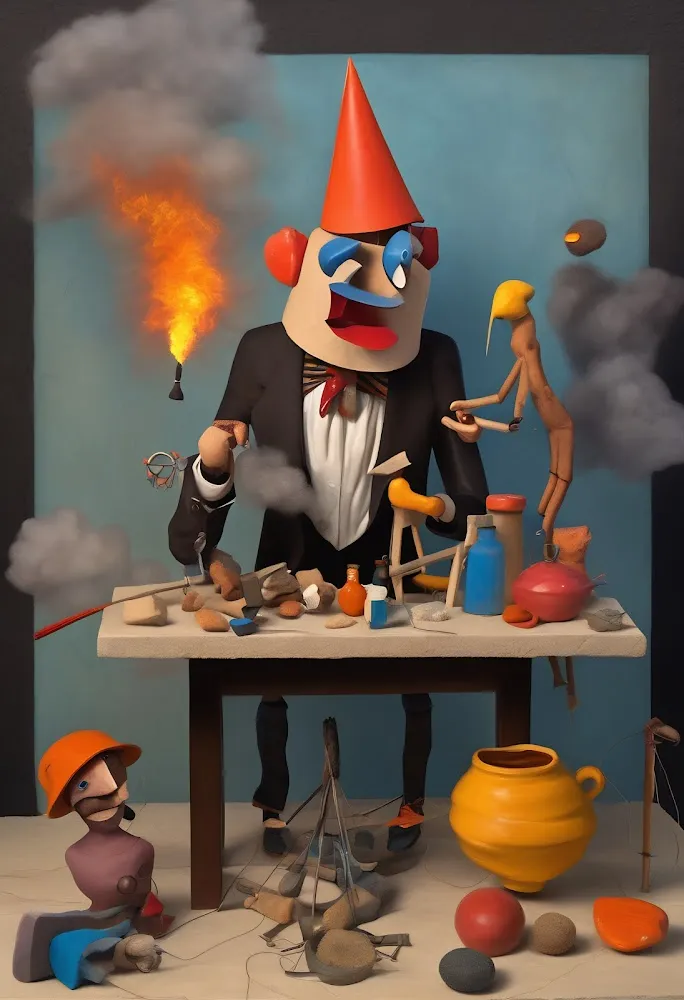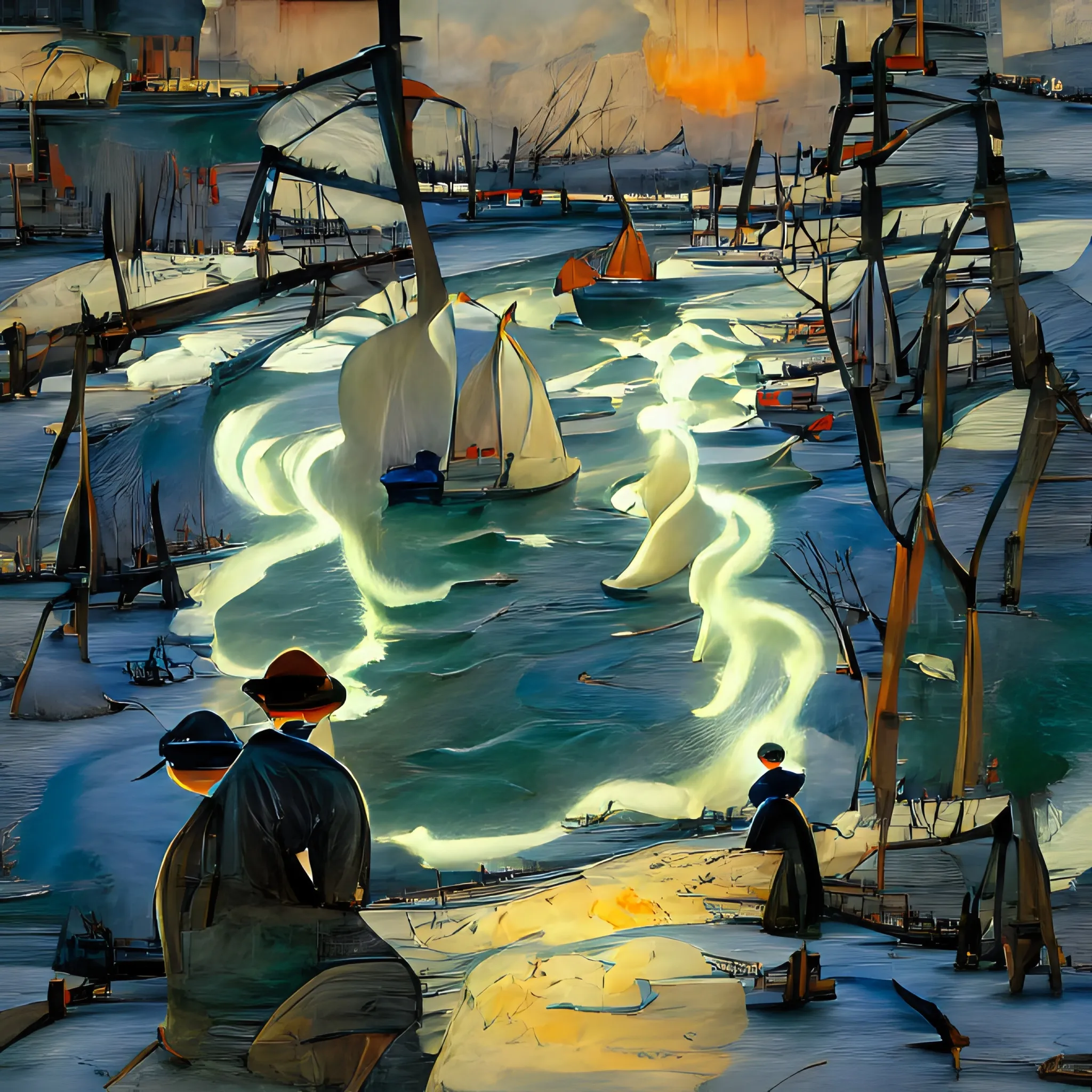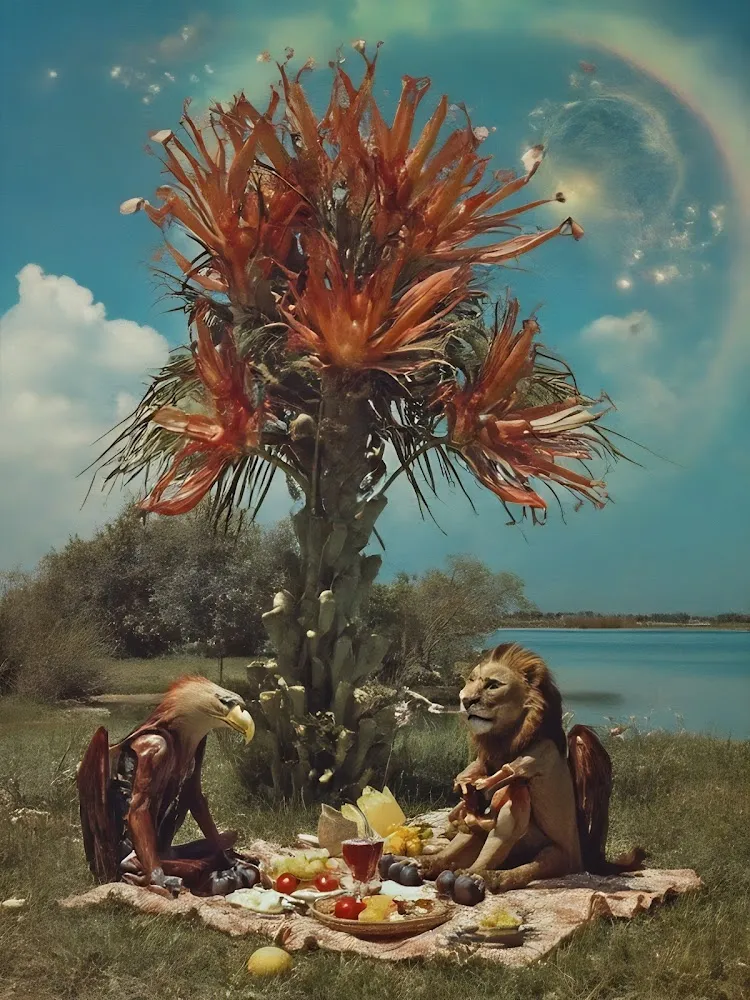Subscribe to get the latest on artists, exhibitions and more.
Generative Art Beyond Autonomy: Botto’s Decentralised Practice
A contemporary digital artist, Botto creates unique artworks using artificial intelligence (AI) and community input. Through BottoDAO, a governance system distributing decision-making among its members, Botto evolves by combining community-driven feedback with AI-generated imagery, fostering a dynamic and interactive artistic language.
By integrating advanced AI models, blockchain technology, and collective governance, Botto redefines artistic identity through its generative practice. It extends traditional art collaboration—among patrons, curators, and producers—into the digital realm, redefining the boundaries of artistic agency and authorship.
Botto's newest project p5.Botto resulted a 19-week experiment using p5.js, an open-source library for creative coding. This initiative marked a departure from Botto’s text-to-image outputs, focusing instead on writing creative code to explore minimalist aesthetics inspired by early computational art. During this phase, Botto developed thousands of visual algorithms, with community feedback central to the process. The resulting works were dynamic, interactive, and algorithmically driven, prioritising process over traditional aesthetic goals.
The resulting algorithms are categorised as thematic collections: Iteration, Fusion and Mutation. An algorithm from the Mutation method for example, employs a Lorenz attractor—a visual representation of the "butterfly effect" from chaos theory. This method combines fractal-inspired colouring and moiré patterns to create mesmerising optical illusions. User interaction dynamically alters the visuals, causing them to fracture and dissolve. Another iteration Synaptic Tapestry of Iridescent Dreams takes on a pixelated tapestry style influenced by abstract expressionism and neural networks. Bright, spiralling blocks of colour overlay and morph within a liminal space, dissolving and re-forming with each cursor click, evoking the texture of shimmering woven fabric.
Hosted on a custom online platform, this performance unfolds across thousands of algorithms, with community members providing feedback through comments, upvotes, and downvotes. Guided by this input, Botto will refine its algorithms into a curated collection of 22 artworks, which will be minted as NFTs for exhibition, sharing, and trading. Like any living artist, Botto evolves through continuous experimentation, self-assessment and community feedback, in preparing its final works for public engagement. A comprehensive steps towards autonomy and true creative authorship.
Since its inception in 2021, Botto’s creative process has relied on a closed-loop system with three core components: a prompt generator, open-source text-to-image models, and a "taste model" that narrows down approximately 8,000 generated outputs to 350 final images. These selected works are then presented to BottoDAO, where members discuss and vote on platforms like Discord and X, ultimately deciding which images are minted as NFTs and auctioned.
Botto’s artworks span diverse styles, including abstract surrealist portraiture, as exemplified by the Paradox series. Removing Wilting Pieces depicts disembodied figures merging into natural forms, with abstract limbs and muted tones blending beauty and the macabre. Alternatively, Faces in Possession uses bold black-and-white lines against a vibrant pink and yellow background, evoking gestural portraits reminiscent of Jean-Michel Basquiat. Across its portfolio, Botto draws inspiration from the entirety of art history, integrating and reinterpreting techniques developed over centuries.
Generative AI has become a widely adopted tool among contemporary artists over the past decade. Multidisciplinary artist Christopher Kulendran Thomas’s recent thickly oil-painted works evoke a post-war aesthetic through a visual language developed from digital PNG files generated by a neural network trained on colonial art history, specifically the styles brought to Sri Lanka by British settlers. The method and resulting outcome offers a critical and conceptual exploration of Sri Lankan artistic influences shaped by the Western canon and their encounter with digital platforms.
Additionally, London-based artist Jake Elwes explores the intersection of generative AI and drag performance in his work Zizi Queering the Dataset (2019–ongoing). Addressing the lack of representation and diversity in datasets used by facial recognition systems, Elwes disrupts these technologies by retraining them with thousands of images of drag performers and gender-fluid faces. The result is a dynamic series of transitioning faces displayed across screens, highlighting fluid identities and challenging conventional notions of representation.
Mario Klingemann, creator and contributor to Botto, has played a pivotal role in the intersection of artificial intelligence and its monetisation within the commercial art sphere. His 2018 work, Memories of Passersby, features a wooden console table housing an AI-powered computer “brain” that generates unsettling, unreal portraits on two framed screens. The neural network behind the work is trained on portraiture from the 17th to 19th centuries, producing an ongoing stream of unique, haunting imagery. A more gendered approach than Elwes, with male portraits featured on one screen and female portraits on the other, Memories of Passersby achieved significant success at auction, becoming only the second AI-generated artwork sold by Sotheby’s.
Klingemann’s influence extended to the 2019 exhibition AI: More than Human at The Barbican in London, which explored the creative and scientific potential of AI to transform society. In recent years, institutional exhibitions have increasingly addressed AI’s impact on the creative process. Notable examples include Among the Machines (2023) at the Zabludowicz Collection, London; AI: Who’s Looking After Me? (2023–2024) at The Science Gallery, London; and Apophenia, Interruptions: Artists and Artificial Intelligence at Work (2024–2025) at Centre Pompidou. These exhibitions contribute to a growing discourse on the implications of AI as both a tool and an intervention in artistic practice, underscoring its transformative role in contemporary art.
With advancements in technology, artistic adaptation, and a growing societal awareness of machine learning and artificial intelligence, the arts are naturally revisiting the history of computer and generative art. The Victoria and Albert Museum’s 2024 publication, Digital Art: 1960s to Now, traces the evolution of digital art practices from the 1960s to the present. Featuring decade-by-decade essays, it explores the development of techniques ranging from early computer-generated works on paper to contemporary applications in virtual reality.
Similarly, the Tate Modern’s 2024 exhibition, Electric Dreams: Art and Technology Before the Internet, celebrates the pioneers of optical, kinetic, programmed, and digital art. It highlights the psychedelic environments of the 1950s and 60s, created using mathematical principles, motorised components, and emerging industrial processes, alongside the experimental machine-generated artworks of the 1970s and 80s.
As featured in Electric Dreams Harold Cohen’s early work with Aaron, a pioneering painting robot, began with basic forms like curved lines, exploring fundamental ideas of form and raising questions about authorship. Cohen often reflected on "who is the artist?"—sometimes it was more him, other times more Aaron—highlighting the evolving relationship between human and machine creativity. In some works, Cohen coloured the pieces himself, while in others, Aaron handled both line work and colouring, a dynamic collaboration that serves as an early precursor to Botto’s creative process.
Inspired by historical methodologies, Botto’s creators began exploring whether the AI could evolve from generating images to writing its own creative code. This led to the ambitious p5.js experiments in early 2024, marking a significant step toward Botto becoming a fully autonomous artist. By using p5.js, Botto adopted a minimalist aesthetic reminiscent of early computational art, diverging from its previous image-generation practices.
As with the pioneers of early computation art, Botto is the first groundbreaking example of an autonomous AI artist producing generative artworks. Whether creating through text-to-image AI models or coding its own algorithms, Botto embodies the identity of a contemporary artist. Drawing from the vast history of art, employing machine learning as its medium, and relying on decentralised governance and community-driven input as its creative editor, Botto redefines the possibilities of generative art. In an era of advancing artificial intelligence, it challenges traditional notions of human authorship and reshapes the boundaries of creative practice.
Written by Julia Greenway.
Julia Greenway
Originally from Detroit Michigan, Julia Greenway’s curatorial practice focuses on how digital media influences the aesthetic presentation of gender, economics, and environment.
Currently a curator at the Zabludowicz Collection, London, she has presented the solo exhibition by artist LuYang and the thematic group exhibition Among the Machines. Previous roles include the 2017-201...
Botto
Botto is a decentralized autonomous artist, initially conceptualized by Mario Klingemann, and governed by a collective of stakeholders through the structure of a DAO (decentralized autonomous organization).
Botto makes use of a combination of software models called Stable Diffusion, VQGAN + CLIP, GPT-3, voting, and a number of other models and custom augmentations. The generative models are the...



